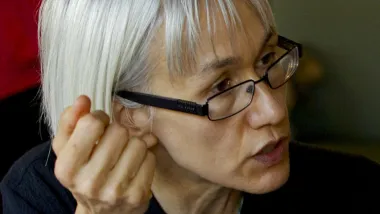Planning students are often told to find good information. How to do that is becoming both simpler, due to various search engines and databases, and more complex, given the amount of information available.
Planning students are often told to find good information. How to do that is becoming both simpler, due to various search engines and databases, and more complex, given the amount of information available. The following tips represent what I (and many other faculty members) actually do to find out about new things.
- Know something already. If you know something about the field you'll make better search decisions. You'll know key authors and organizations. I read a lot which makes searching easier. I also own a number of standard reference books--on topics from planning and design to social theory and research methods. I subscribe to and/or regularly read a number of magazines and journals. My list is a variation on the one offered by Rutgers faculty member Stuart Meck in a response to my last blog. It performs a similar function by giving me a place to start.
- Use specialist encyclopedias or dictionaries. The International Encyclopedia of Social and Behavioral Sciences (ed. Neil J. Smelser and Paul B. Baltes, 2001, Elsevier) has lots of entries on urban studies and planning and many university libraries subscribe to its online version. Entries are written by knowledgeable academics. I own dictionaries and encyclopedias of statistics, geography, philosophy, and architecture. They help me find out about key ideas and major thinkers in a subfield or on a topic--from social capital to Chonbach's alpha.
- Use specialist databases. University libraries subscribe to many databases--a favorite of mine is the Avery Index to Architectural Periodicals that includes quite a lot of planning articles (though not some from newer journals). In addition, as Stuart Meck mentioned in his ealier comment, there are several important online databases in planning. These include the TRB's Transportation Research Information Service (TRIS) and the HUD USER Database: http://www2.huduser.org/portal/bibliodb/pdrbibdb.html
http://tris.trb.org/. - Learn to be a sophisticated user of the internet. If I need academic sources I like using the databases that my library subscribes to but Google Scholar (not plain Google) is a good place to start if time is short. I particularly appreciate being able to enter a classic reference and see who cited it. The Berkeley libraries have an excellent guide to help you find and read web sites: http://www.lib.berkeley.edu/TeachingLib/Guides/Internet/FindInfo.html. Particularly useful is their section on evaluating web pages: http://www.lib.berkeley.edu/TeachingLib/Guides/Internet/Evaluate.html. They have great tips about how to evaluate the URL itself, assess information on the page perimeter, look for sources, and use reviews. This is basically what faculty do when they read web pages.
- Put ".edu" in with the search terms in an internet search to make extra sure you'll get some university web pages. University centers and institutes often have useful overview materials.
- Ask reference librarians how to find things. They can be helpful. I've learned a lot from them--particularly those specializing in images, maps, and statistical data.
Other blog entries have dealt with finding specific kinds of information including: general information about the field of planning, images, more images, articles, organizations, books, more books, and history sources.

Planetizen Federal Action Tracker
A weekly monitor of how Trump’s orders and actions are impacting planners and planning in America.

Chicago’s Ghost Rails
Just beneath the surface of the modern city lie the remnants of its expansive early 20th-century streetcar system.

Amtrak Cutting Jobs, Funding to High-Speed Rail
The agency plans to cut 10 percent of its workforce and has confirmed it will not fund new high-speed rail projects.

Ohio Forces Data Centers to Prepay for Power
Utilities are calling on states to hold data center operators responsible for new energy demands to prevent leaving consumers on the hook for their bills.

MARTA CEO Steps Down Amid Citizenship Concerns
MARTA’s board announced Thursday that its chief, who is from Canada, is resigning due to questions about his immigration status.

Silicon Valley ‘Bike Superhighway’ Awarded $14M State Grant
A Caltrans grant brings the 10-mile Central Bikeway project connecting Santa Clara and East San Jose closer to fruition.
Urban Design for Planners 1: Software Tools
This six-course series explores essential urban design concepts using open source software and equips planners with the tools they need to participate fully in the urban design process.
Planning for Universal Design
Learn the tools for implementing Universal Design in planning regulations.
Caltrans
City of Fort Worth
Mpact (founded as Rail~Volution)
City of Camden Redevelopment Agency
City of Astoria
City of Portland
City of Laramie






























